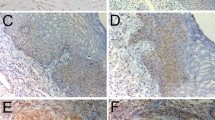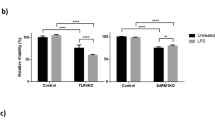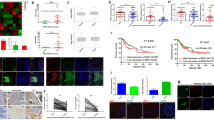Summary
Inflammation and infection play an important role in the pathogenesis of many cancers. Toll-like receptors (TLRs) are a class of pattern recognition receptors that recognize conserved components of microbes and trigger the immune response against invading microorganisms. Toll-like receptor 9 (TLR9) recognizes non-methylated cytosine-phosphateguanosine (CpG) DNA sequences which are the surrogate for viral DNA. TLR9 may react to tumor development and progression during chronic inflammation that involves the tumor microenvironment. In order to study the role of TLR9 in cervical cancer, we analyzed the TLR9 expression in different types of HPV infection cervical cancer cells. Then we detected if CpG sequences influenced the TLR9 expression and the sensitivity to cisplatin (DDP) of these cervical cancer cells in vitro. The expression of TLR9 mRNA and protein in SiHa, Hela and C33A cells was detected by RT-PCR and Western blotting. Real-time PCR was used to examine the TLR9 expression changes induced by CpG. Chemosensitivity of the cervical cancer cells to cisplatin (DDP) was measured by MTT. It was observed that the expression of TLR9 mRNA and protein was increased gradually in SiHa (HPV16+), Hela (HPV18+) and C33A (HPV−) cells. Low doses of CpG increased the TLR9 expression only in C33A (HPV−) cells, but not in SiHa (HPV16+) and Hela (HPV18+) cells. Furthermore, low dose of CpG significantly increased the sensitivity of C33A (HPV−) cells, but not that of SiHa (HPV16+) and Hela (HPV18+) cells. These results indicated that TLR9 may serve as a protective agent in HPV negative cervical cancer cells. It was concluded that TLR9 could improve the sensitivity to DDP in HPV negative cervical cancer cells and might represent a potential therapeutic option in clinical practice.
Similar content being viewed by others
References
Jemal A, Bray F, Center MM, et al. Global cancer statistics. CA Cancer J Clin, 2011,61(2):69–90
Schwarz E, Freese UK, Gissmann L, et al. Structure and Transcription of Human Papillomavirus Sequences in Cervical-Carcinoma Cells. Nature, 1985,314(6006):111–114
Nikolaitchouk N, Andersch B, Falsen E, et al. The lower genital tract microbiota in relation to cytokine-, SLPI- and endotoxin levels: application of checkerboard DNA-DNA hybridization (CDH). APMIS, 2008,116(4): 263–277
Hari A, Flach TL, Shi Y, et al. Toll-like receptors: role in dermatological disease. Mediators Inflamm, 2010,2010: 437246
McInturff JE, Modlin RL, Kim J. The role of toll-like receptors in the pathogenesis and treatment of dermatological disease. J Inv Dermatol, 2005,125(1):1–8
Yu L, Chen SW. Toll-like receptors expressed in tumor cells: targets for therapy. Cancer Immunol Immunother, 2008,57(9):1271–1278
Akira S, Uematsu S, Takeuchi O. Pathogen recognition and innate immunity. Cell, 2006,124(4):783–801
Medzhitov R, Janeway C. Innate immunity. N Engl J Med, 2000,343(5):338–344
Poltorak A, He X, Smirnova I, et al. Defective LPS signaling in C3H/HeJ and C57BL/10ScCr mice: Mutations in TLR4 gene. Science, 1998,282(5396):2085–2088
Hayashi F, Smith KD, Ozinsky A, et al. The innate immune response to bacterial flagellin is mediated by Toll-like receptor 5. Nature, 2001,410(6832):1099–1103
Lee JW, Choi JJ, Seo ES, et al. Increased toll-like receptor 9 expression in cervical neoplasia. Mol Carcinog, 2007,46(11):941–947
Wang W, Wang S, Song X, et al. The relationship between c-FLIP expression and human papillomavirus E2 gene disruption in cervical carcinogenesis. Gynecol Oncol, 2007,105(3):571–577
Weng D, Song X, Xing H, et al. Implication of the Akt2/survivin pathway as a critical target in paclitaxel treatment in human ovarian cancer cells. Cancer Letters, 2009,273(2):257–265
Wu H, Cao Y, Weng D, et al. Effect of tumor suppressor gene PTEN on the resistance to cisplatin in human ovarian cancer cell lines and related mechanisms. Cancer Letters, 2008,271(2):260–271
Pisani P, Parkin DM, Bray F, et al. Estimates of the worldwide mortality from 25 cancers in 1990. Int J Cancer, 1999,83(1):18–29
Bosch FX, Lorincz A, Munoz N, et al. The causal relation between human papillomavirus and cervical cancer. J Clin Pathol, 2002,55(4):244–265
Munoz N, Bosch FX, de Sanjose S, et al. Epidemiologic classification of human papillomavirus types associated with cervical cancer. N Engl J Med, 2003,348(6):518–527
Huang B, Zhao J, Li HX, et al. Toll-like receptors on tumor cells facilitate evasion of immune surveillance. Cancer Res, 2005,65(12):5009–5014
Goto Y, Arigami T, Kitago M, et al. Activation of toll-like receptors 2, 3, and 4 on human melanoma cells induces inflammatory factors. Mol Cancer Ther, 2008,7(11):3642–3653
Andersen JM, Al-Khairy D, Ingalls RR. Innate immunity at the mucosal surface: Role of toll-like receptor 3 and toll-like receptor 9 in cervical epithelial cell responses to microbial pathogens. Biol Reprod, 2006,74(5):824–831
Modlin RL, Cheng G. From plankton to pathogen recognition. Nat Med, 2004,10(11):1173–1174
Matsushima H, Yamada N, Matsue H, et al. TLR3-, TLR7-, and TLR9-mediated production of proinflammatory cytokines and chemokines from murine connective tissue type skinderived mast cells but not from bone marrow-derived mast cells. J Immunol, 2004,173(1):531–541
Yu L, Wang L, Li M, et al. Expression of toll-like receptor 4 is down-regulated during progression of cervical neoplasia. Cancer Immunol Immunother, 2010,59(7): 1021–1028
Chow EK, O’connell RM, Schilling S, et al. TLR agonists regulate PDGF-B production and cell proliferation through TGF-b/type I IFN crosstalk. EMBO J, 2005, 24(23):4071–4081
Hasan UA, Bates E, Takeshita F, et al. TLR9 expression and function is abolished by the cervical cancer-associated human papillomavirus type 16. J Immunol, 2007,178(5):3186–3197
Martin M, Rehani K, Jope RS, et al. Toll-like receptor-mediated cytokine production is differentially regulated by glycogen synthase kinase 3. Nature Immunol, 2005,6(8):777–784
Ivanov S, Dragoi AM, Wang X, et al. A novel role for HMGB1 in TLR9-mediated inflammatory responses to CpG-DNA. Blood, 2007,110(6):1970–1981
Author information
Authors and Affiliations
Corresponding author
Additional information
This project was supported by grants from the National Natural Sciences Foundation of China (No. 30973184) and the “973” Program of China (No. 2009CB521800).
Rights and permissions
About this article
Cite this article
Weng, Y., Wang, Y., Shi, Y. et al. TLR9 expression and its role in chemosensitivity to DDP in human cervical cancer cells in vitro . J. Huazhong Univ. Sci. Technol. [Med. Sci.] 31, 550–554 (2011). https://doi.org/10.1007/s11596-011-0488-y
Received:
Published:
Issue Date:
DOI: https://doi.org/10.1007/s11596-011-0488-y




